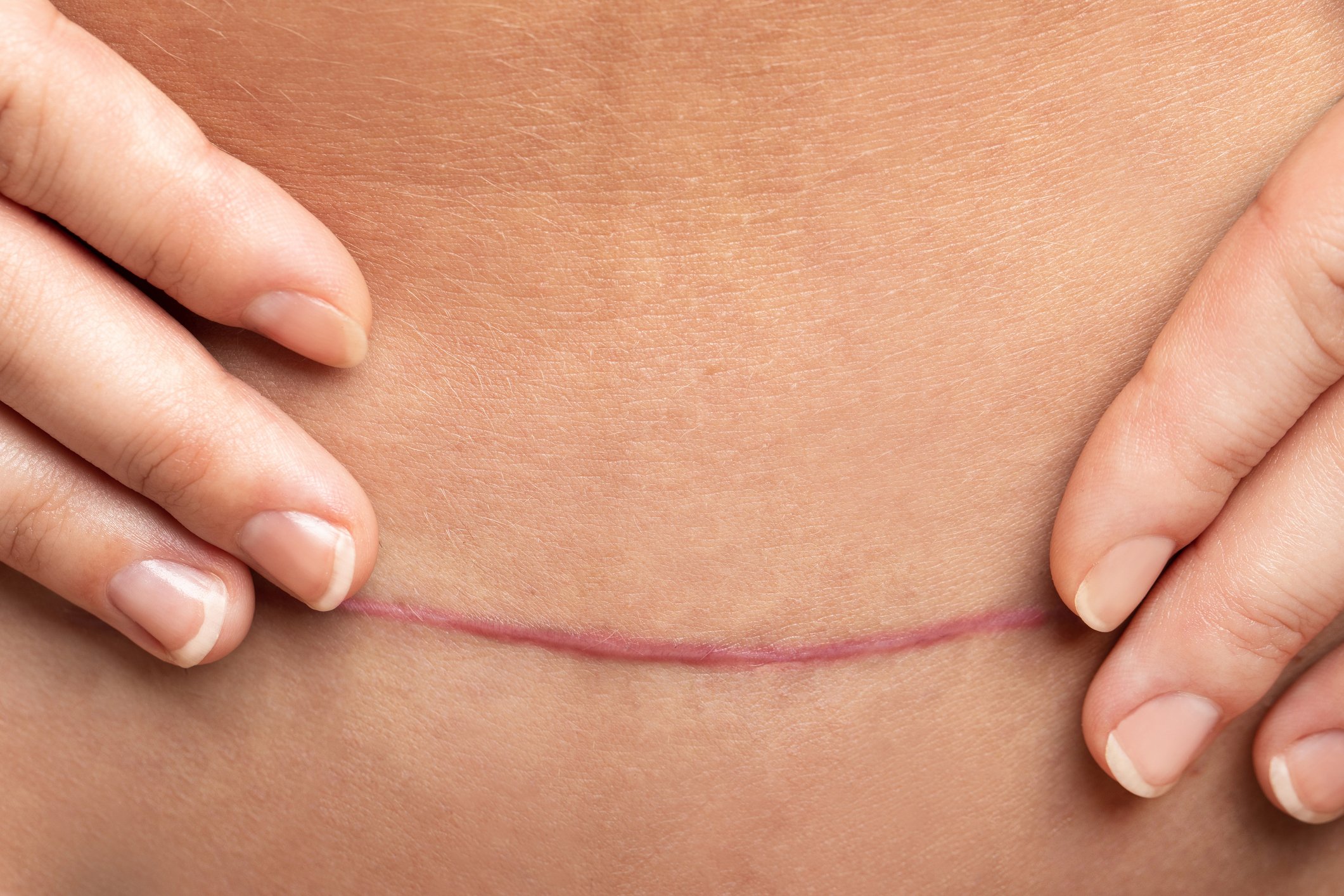However your baby arrives, there may be some effects on your pelvic floor after pregnancy. Please know there is no “right” way to give birth! Whether we birth by Cesarean or vaginally is a decision made in the interests of our safety, or of free choice.
You may be wondering if a c-section is ‘better’ for the pelvic floor than giving birth vaginally. So how is your pelvic floor affected after c-section?.
Feeling Informed
Every body is different and in the case of birth, there are (at least) two bodies at play here. This makes looking at statistics and research to tell what is “best” a little tricky.
A baby with a weight of a larger size might have more of an impact in pregnancy and birth on a woman’s pelvic floor than in other situations. Or, for example, a smaller baby sitting lower and for longer in the pelvic brim, or a birth with a longer pushing stage could have more of an impact on the pelvic muscles than a heavier baby born vaginally in an average amount of time.
It’s helpful to think about your pelvic floor health during and after pregnancy no matter if you have a planned Cesarean, a small baby, multiple babies, a homebirth, are planning for a second or third birth, or are high-risk. A little preparation and awareness will help you to feel more empowered and in control.
The Impact of Pregnancy on Strength and Tone
Pregnancy can change the tone and strength of your pelvic floor.
As your uterus does its incredible expansion and you grow a baby in there (or a few of them at once), it is obviously going to put some added strain on the soft tissue in your pelvic floor. They are responsible for holding up your organs and experience the added pressure of supporting the weight of a baby.
You can read more about the changes to your pelvic floor in pregnancy, including pelvic floor exercises for pregnancy in our pelvic floor resources section of the website.
Vaginal Birth and Your Pelvic Floor : Tips for Protection
Vaginal birth can cause strain to the pelvic floor in multiple ways.
Long pushing stages, prolonged labor, medications and other interventions (more below), baby not being in an optimal position, and lying in a position where you are tightening or pushing up against part of your pelvic floor in labor can all cause increase the likelihood of pelvic floor damage from vaginal birth.
To potentially protect your pelvic floor and perineum in vaginal birth:
- Do your pelvic floor exercises in pregnancy. How to do pelvic floor exercises here.
- Take care of your mental health as well as you can. Ask questions to feel informed and ease anxiety. Ask for practical as well as emotional help whenever you want or need it.
- Talk to your Midwife or OB about pelvic floor prep for birth.
- Don’t forget to stretch and release – more on releasing your pelvic floor here. Pelvic floor strength is not just about squeezing and tightening, especially in birth prep. Your body will want to release, relax, and let go! 😌
- Do your research around birthing positions for pelvic floor protection.
Operative Vaginal Birth
In some births where there are more complications, more interventions may be advised or needed.
This might come in the form of medications to quicken labor (pitocin, misoprostol) or instrumental interventions like catheters, cervical balloons, episiotomies (a surgical cut to your perineum), forceps, or vacuums. When these techniques are used to help with birthing, it’s called an “operative vaginal delivery.”
Where these interventions are necessary, they can be life-saving, so never, ever feel shame around medicalized birth or intervention – you’re doing great! But forceps, vacuum etc can affect your pelvic floor muscles more than non-operative vaginal births. There’s no right or wrong, and outcomes will vary from mother to mother. All risks and benefits will be taken into consideration in making these decisions with your support team and primary care provider.
If you have had an operative or otherwise more complicated vaginal birth, it’s a good idea to request follow-up care specifically focused on your pelvic floor. Luckily, this is becoming something more built into standard postpartum care, but you may have to take the added step of asking for it if not offered.
Cesarean Birth : Your Pelvic Floor After C-Section
There is sometimes a belief that Cesarean birth will leave your pelvic floor intact by avoiding vaginal birth. But it may not be that simple.
There are instances where Cesarean births protect your pelvic floor more — one recent study suggests this is true for VBACs and others show a possible lower risk for Cesarean surgery over some operative vaginal births. In low-risk situations, vaginal birth with minimal or no instrumental interventions, but in water or with a focus on passive pushing, etc., vaginal birth may have less of an impact on pelvic floor health than surgery. There are a lot of factors at play!
As mentioned, pregnancy itself typically changes the tone of your pelvic floor muscles, as well as all the muscles in your core. That’s true, so you can have pelvic floor issues after a c-section or a vaginal birth.
Cesarean birth is a major surgery and involves incisions through major muscle groups. Our bodies are incredible healing machines and Cesarean births keep getting safer and safer, but it is surgery nonetheless and you will have a prolonged period of recovery. This should include focusing on your pelvic floor after a c-section (vaginal muscles included) when recovering.
Read our article here for more tips on pelvic floor exercises after a c section including how to do them, when to start and even dietary tips.
Caring for your Pelvic Floor in Postpartum
Whether you’ve had a vaginal or Cesarean birth, paying attention to the strength and stretch of your pelvic floor in postpartum is ideal.
Here are some tips:
- Check-in with a pelvic floor physical therapist after birth.
- Be easy with yourself. Don’t focus on “bouncing back” so much as bringing yourself back to a strong center.
- Don’t ignore symptoms like leaking or pain. They’re common, but there are many strategies and solutions to alleviate and fix these issues, so don’t suffer in silence. Your pelvic floor physical therapist and MUTU will help!
- Try to take the time for breath-work (the foundations of MUTU Core© exercises), rest and relaxation, and take care of your mental health. Might sound woo-woo, but it’s truly part of having a healthy pelvic floor, we promise 💜.












